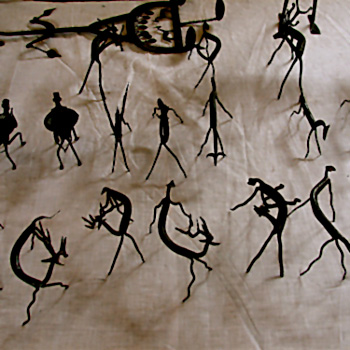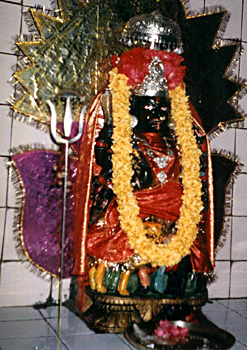 Kanker District is situated in the southern region of Chhattisgarh. Previously Kanker was a part of old Bastar District. But in the year 1999 Kanker District got its identity as an independent district. This district is surrounded by four districts of Chhattisgarh, namely Bastar, Dhamtari, Durg and Rajnandgaon. Kanker District is situated within the longitudes 20.6 to 20.24 and latitudes 80.48 to 81.48. The total area of the district is near about 5285 sq kms.
Kanker District is situated in the southern region of Chhattisgarh. Previously Kanker was a part of old Bastar District. But in the year 1999 Kanker District got its identity as an independent district. This district is surrounded by four districts of Chhattisgarh, namely Bastar, Dhamtari, Durg and Rajnandgaon. Kanker District is situated within the longitudes 20.6 to 20.24 and latitudes 80.48 to 81.48. The total area of the district is near about 5285 sq kms.
History of Kanker District
History of Kanker District dates back to the stone era. As per the historical references, this district has always been an independent state. With reference of Ramayana and Mahabharata there was a dense forest area named Dandakaranya and the Kanker state belonged to Dandakaranya. Chronologically at different times, this region came under the authority of Chalukyas, Nags, Vakatakas, the Guptas and then under the Kandra dynasty. Next, Chandra dynasty came to power. Kanker was under this dynasty before it came under the British rule. Initially, it was a part of old district of Bastar. It attained the status of a separate district in 1999.
Geography of Kanker District
 Geography of Kanker District is characterized by small hilly pockets and five main rivers that are flowing through the district. The five main rivers are Doodh River, Mahanadi River, Hatkul River, Sindur River and Turu River. The climate of the district is mainly of Monsoon type. May is the hottest month and the December is the coolest month. Average rainfall of the district is 1492 mm. The district receives 90 per cent rainfall during June to October. Climate changes from dry to wet. Dry climate is found in Kanker and Charama and the wet climate is found in Bhanupratappur. A huge portion of the district is covered by forests which are good sources of woods.
Geography of Kanker District is characterized by small hilly pockets and five main rivers that are flowing through the district. The five main rivers are Doodh River, Mahanadi River, Hatkul River, Sindur River and Turu River. The climate of the district is mainly of Monsoon type. May is the hottest month and the December is the coolest month. Average rainfall of the district is 1492 mm. The district receives 90 per cent rainfall during June to October. Climate changes from dry to wet. Dry climate is found in Kanker and Charama and the wet climate is found in Bhanupratappur. A huge portion of the district is covered by forests which are good sources of woods.
Administration of Kanker District
Administration of Kanker District includes seven tehsils named Kanker, Charama, Narharpur, Bhanupratappur, Antagarh, Durgukondal and Pakhanjoor and seven blocks named Kanker, charama, bhanupratapur, Narharpurn Antagarh, Durgukondal and Koyali beda. The total number of villages is 1004. The number of revenue villages is 995, whereas forest villages are nine. The number of Gram Panchayats is 389.
Culture of Kanker District
Culture of this tribal district is characterized by the indigenous traditions and beliefs of the inhabitants. Several tribes are residing in this district. Culture of Kanker District also includes the colourful festivals, arts and crafts of the local people. Wood Craft and Bamboo Crafts contribute heavily to the culture of this district. People residing in this district have their own religious beliefs.
Economy of Kanker District
Economy of Kanker District is agrarian in character. The land is not plain surface and is mostly covered by forests. So, the farmers firstly cut the trees before the rainy season and plough the land for agriculture. This type of agriculture is called as Marhan or Dippa. After one and two years they prepare a new farm and leave the old one. People divide their farms by constructing small partitions. Rice is the main crop of the area but wheat, sugarcane, chana, Moong and bhutta are the other important crops. People also grow many types of vegetables. A lot of fruits like Mangoes, Bananas, etc. are also produced.
Tourism in Kanker District
Tourism options in Kanker District include several sightseeing options. Here, the travellers can experience nature and pilgrimage tourism. There is no dearth of exploring options in this district. Some of the popular places of interest that are worth visiting are Shivani Temple, Gadiya Mountain, Malanjhkudum Waterfall and Charre-Marre Waterfall.
Kanker District is situated on the National Highway number 43. It lies between the two well developed cities of Chhattisgarh named Raipur (the capital city) and Jagdalpur. The Kanker is 140 kilometers away from Raipur and 160 Kilometers from Jagdalpur.






